
Thanks for all who attended the live chat with Lauren Browne. We had a lively time discussing lots of Tudor-y things! Here is the transcript of the chat for those who missed it…
[Read More...]
Thanks for all who attended the live chat with Lauren Browne. We had a lively time discussing lots of Tudor-y things! Here is the transcript of the chat for those who missed it…
[Read More...]
As you probably know, the Tudor Society now runs Tudor history tours in conjunction with British History Tours. This year, we ran the Anne Boleyn Experience Tour in May and are running the Discover the Tudors Tour in September. The Anne Boleyn Experience was a wonderful tour and I (Claire) can’t wait for the September tour, I’m counting the days!
Anyway, we have just finalised the details for our 2019 tours and are giving you an advance preview of them and also the chance to book on them before they are released to the general public on Sunday. The Anne Boleyn Experience 2018 sold out in just a few days so do act quickly if you want to secure your place. The tours we are running are The Anne Boleyn Experience in May 2019 and The Executed Queens Tour in July 2019. I am so very excited about these – more opportunities to get my Tudor fix! We already have bookings for next year’s tours from some of those who went on our May tour so people definitely enjoyed it, which is lovely to know.
[Read More...]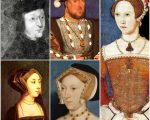
In today’s Claire Chats video talk, I finish my series on the treatment Mary received at the hands of her father following the breakdown of her parents’ marriage. I examine what happened to Mary after the death of her mother in January 1536 and Anne Boleyn’s execution in May 1536.
[Read More...]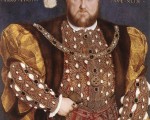
Happy birthday to the man who has the honour of being both my favourite and least favourite king! I find him fascinating but also love to hate him.
I thought I’d celebrate the anniversary of his birth on 28th June 1491 by sharing some of the Henry VIII resources we have here for members at the Tudor Society:
[Read More...]
In this month’s Tudor Life magazine we are focussing on James VI of Scotland who became the first king of Britain, James I. It’s an interesting view of the man who took over from Elizabeth I.
[Read More...]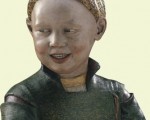
25th June:
1503 – Catherine of Aragon was formally betrothed to Prince Henry, the future Henry VIII, and second son of Henry VII. She had been married to Arthur, Prince of Wales, Henry VII’s eldest son, but he died in 1501 after only six months of marriage.
1533 – Death of Mary Tudor, Queen of France, the thirty-seven-year-old sister of Henry VIII and wife of his friend Charles Brandon, Duke of Suffolk. She died at her home, Westhorpe Hall in Suffolk, and was buried at the local abbey in Bury St Edmunds, Suffolk. When the abbey was dissolved, however, her remains were moved to St Mary’s Church, Bury St Edmunds. Click here to read more.
1539 – Baptism of courtier Gregory Fiennes, 10th Baron Dacre, the younger son of Thomas Fiennes, 9th Baron Dacre, and Mary, the daughter of George Neville, Baron Bergavenny.
1601 – Death of Peregrine Bertie, 13th Baron Willoughby, Beck and Eresby, at Berwick upon Tweed. He died of a fever. Bertie was the only son of Richard Bertie and Katherine, Duchess of Suffolk, 12th Baroness Willoughby de Eresby and the well known Protestant patron. Bertie was a soldier, nobleman, ambassador, Governor of Berwick upon Tweed and Warden of the East March.

The Tudor Society weekly quiz this Sunday is a true or false quiz on some famous Tudor women. Test your knowledge with this fun little quiz – good luck!
[Read More...]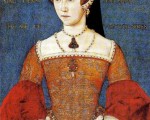
On 22nd June 1536, after two years of ill-treatment and bullying, Mary Tudor, the daughter of Henry VIII and Catherine of Aragon, submitted to her father, accepting him as Supreme Head of the Church in England and accepting the invalidity of her parents’ marriage, and, therefore, her illegitimacy.
Previously, Mary had been defiant in rejecting her demotion from Princess Mary to Lady Mary and in not accepting the annulment of her parents’ marriage or the terms of the 1534 First Act of Succession. However, plans for her escape to the Continent led to nothing and her friend and advisor, Eustace Chapuys, the imperial ambassador, feared that Mary would be martyred if she did not submit to the king. Chapuys advised her that she should “consent to her father’s wish” if she felt that she was in danger. He reassured her that this was the Emperor’s advice.
[Read More...]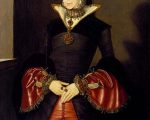
In the second part of my series on the treatment that Mary, the future Mary I, received from her father following the breakdown of her parents’ marriage, I look at the years 1534 and 1535 and what happened to Mary after Parliament passed the First Act of Succession.
[Read More...]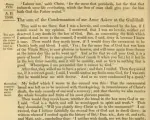
If you remember, back in May, I wrote about Henry VIII’s Privy Council sending letters on 24th May 1546 to reformer Anne Askew and her estranged husband, Thomas Kyme, ordering them to appear in front of the council within fourteen days. Well, on 18th June 1546*, Anne, Nicholas Shaxton (former Bishop of Salisbury), Nicholas White and John Hadlam were all found guilty of heresy at London’s Guildhall.
Charles Wriothesley records that they “were this daie first indited of heresie and after arraygned on the same, and their confessed their heresies against the sacrament of the alter without any triall of a jurie, and so had judgment to be brent[burnt].” Although all four were condemned to death, Shaxton and White recanted their heretical beliefs and were spared. Shaxton visited Anne in prison and tried to persuade her to recant, but she would not and she said to him “that it had been good for him never to have been born”.
[Read More...]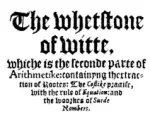
On this day in history, 18th June 1558, the will of Robert Recorde, the Welsh mathematician, physician and mint administrator, was proved. His date of death is not known, but he is thought to have died in mid-June 1558.
Recorde is known for introducing the “equal to” sign, i.e. “=”. He published several mathematical works, including The Grounde of Artes, teachings the Worke and Practise, of Arithmeticke, both in whole numbers and fractions in 1543, which was the first book on Algebra published in England, and The Whetstone of Witte, whiche is the seconde parte of Arithmeteke: containing the extraction of rootes; the cossike practise, with the rule of equation; and the workes of Surde Nombers, in which he introduced the “=” sign.
[Read More...]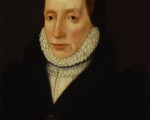
18th June:
1529 – Opening of the Legatine Court at Blackfriars to hear the case for the proposed annulment of Henry VIII’s marriage to Catherine of Aragon.
1546 – Anne Askew was arraigned at London’s Guildhall for heresy, along with Nicholas Shaxton, Nicholas White and John Hadlam (Adlams or Adams). She was sentenced to be burned at the stake.
1558 – Proving of the will of Robert Recorde, Welsh mathematician and physician. His date of death is not known, but is thought to have been mid June 1558. He is known for introducing the “equal to” sign, i.e. “=”. He published several mathematical works.
1588 – Death of Robert Crowley, Protestant printer, author, poet and Church of England clergyman. He was buried in the chancel of St Giles Cripplegate under the same stone as his great friend martyrologist, John Foxe.
1592 – Death of Francis Wyndham, Judge, at the Committee House, St Peter Mancroft, Norwich. His trials included the treason trials of John Somerville and William Parry in the 1580s, and his legal knowledge led to him being approached for advice on Mary, Queen of Scots.
1616 – Death of Thomas Bilson, Bishop of Winchester, at Westminster. He was buried at Westminster Abbey.

Test your knowledge of Tudor history with this week’s quiz. Grab your favourite beverage and a snack, make yourself comfortable and get your grain working with these general Tudor history quiz questions. Good luck!
[Read More...]
I have very mixed feelings about Mary I, but I have to say that there is much to admire about her. Not only did she rally support against Wyatt’s Rebellion in 1554 and reign as the first official queen regnant; not only did she rally support for her claim to the throne in 1553, being prepared to give her life for it; but she also stood up to her father, King Henry VIII, and the bullies he got to do the king’s business, when she was just seventeen years old. She was a tough cookie.
In today’s Claire Chats I talk about what happened to Mary from 1531 to 1534, what she went through.
[Read More...]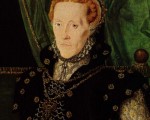
Mildred Cooke came from the influential Cooke family of Gidea Hall, Essex, a household renowned for its links with Renaissance humanism and reformist sympathies. Her father, Sir Anthony Cooke, was a royal tutor to King Edward VI; shaping the boy king’s interest in classical learning and Protestantism. Mildred’s sisters: Anne, Catherine and Elizabeth became renowned female scholars, with Anne famously translating from Latin John Jewel’s Apologie of the Anglican Church (1564). While the Cooke women were in the minority in terms of female education, (Thomas More’s daughter Margaret, and his wards, received humanist educations) their education did not mirror their male contemporaries. Sixteenth-century European scholars and clergyman dictated that women were naturally defective and immoral in comparison with virtuous, honourable men. However Humanist educators, such as Juan Luis Vives, understood the importance of educating women. He stressed that their curriculum should avoid ‘masculine’ studies such as mathematics, science and government. Rather, he recommended studying theological translations, languages and the moral philosophers of antiquity such as Plato and Cicero; topics that would not ‘corrupt’ the innate weakness of the female sex.
[Read More...]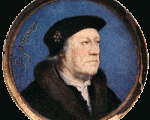
11th June:
1456 – Birth of Anne Neville, Queen Consort of Richard III, at Warwick Castle. Anne was the daughter of Richard Neville, 16th Earl of Warwick and 6th Earl of Salisbury, known as the Kingmaker, and his wife, Anne Beauchamp.
1488 – Death of James III of Scotland, at Sauchieburn, or “the field of Stirling”. It is not known whether he died in battle or after the battle.
1509 – Marriage of Henry VIII and Catherine of Aragon at Greenwich Palace .
1540 – Birth of Barnabe Googe, translator and poet. Googe is known as one of the earliest English pastoral poets.
1544 – Bishops ordered by Henry VIII to ensure that the new litany was “in our native englysshe tonge”.
1560 – Death of Marie de Guise (Mary of Guise), former consort of James V and regent of Scotland, at Edinburgh Castle. Her body lay in a lead coffin at the castle, in St Margaret’s Chapel, until March 1561 when it was taken back to France. Marie was buried in the convent of St Pierre at Rheims.
1576 – Death of Sir Anthony Cooke, humanist and educator. Cooke educated his daughters to a high standard, teaching them Latin and Greek, and probably also modern languages and Hebrew. He was appointed royal tutor to Edward VI, but it is not known whether he actually tutored the King. It may have been more of a guiding role. He was buried at Romford, and his effigy can be seen at St Edward’s Church there.
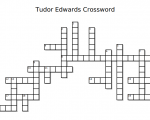
Edward was a very popular name in Tudor times! Test your knowledge of Tudor Edwards with this fun crossword puzzle – good luck!
[Read More...]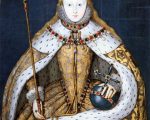
In today’s Claire Chats video, I clear up a few misunderstanding that seem prevalent on social media regarding coronations, the numbering of monarchs, queens regnant versus queens consort, what makes a monarch and a few other issues to do with coronations and monarchy.
[Read More...]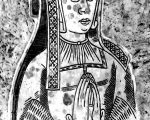
Honor Grenville was born around c.1493-95; the daughter of Sir Thomas Grenville and his wife, Isabella Gilbert. Thomas was of Cornish origin, from the parish of Stowe in Kilkhampton, Cornwall. Honor was first married to Sir John Basset (1462-1528) of Umberleigh in the Parish of Atherington in Devon. The marriage was fairly ideal for the daughter of a gentry family. Her father was a well-respected Lord of the Manor of Stowe and Bideford in Devon. Additionally, he was a renowned Lancastrian supporter during the Wars of the Roses period, appointed one of the Esquires of the Body to Henry VII. Honor’s husband was Sherriff of Devon in the years 1497, 1517 and 1522, respectively and an important figure in West country politics. The couple produced seven surviving children, who entered a variety of careers. These children shall be explored later in the article.
While the marriage was ideal in terms of production of children, Honor’s second marriage would propel her into more discernible society. Her husband, John Basset, died in 1528, with Honor soon after marrying Arthur Plantagenet, 1st Viscount Lisle, thus becoming Lady Lisle. Her husband was later given the office of Lord Deputy of Calais. Most significantly about Arthur was his lineage, being the illegitimate son of King Edward IV and therefore having Plantagenet blood. He was the half-brother of Queen Elizabeth of York and uncle of the current king of this period, Henry VIII – an uneasy connection.
[Read More...]
On this day in history, 6th June 1522, Charles V, Holy Roman Emperor and the nephew of King Henry VIII’s wife, Catherine of Aragon, made a grand entry into the city of London. He was accompanied by King Henry VIII.
Three years ago, I did a Claire Chats video talk on Charles V’s 1522 visit to England, and here it is:
[Read More...]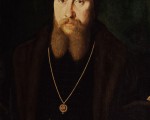
4th June…
1534 – Death of Sir Edward Guildford at Leeds Castle. Guildford acted as guardian to John Dudley (future Duke of Northumberland) and held the posts of Marshal of Calais, Constable of Dover Castle and Lord Warden of the Cinque Ports.
1536 – Jane Seymour was proclaimed Queen at Greenwich Palace. Charles Wriothesley, the Tudor chronicler, recorded: “Also the 4th daie of June, being Whitsoundaie, the said Jane Seymor was proclaymed Queene at Greenewych, and went in procession, after the King, with a great traine of ladies followinge after her, and also ofred at masse as Queen, and began her howsehold that daie, dyning in her chamber of presence under the cloath of estate.”
1550 (some sources say 5th June) – Robert Dudley married Amy Robsart at the royal palace of Sheen at Richmond, near London. The marriage was attended by the then king, Edward VI.
1561 – The spire of St Paul’s Cathedral caught fire after being struck by lightning. The fire melted the Cathedral’s bells and lead from the spire “poured down like lava upon the roof”……
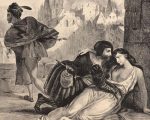
This month’s expert is the final part of our three-part series with Lauren Browne on Tudor Rivals and Mistresses. This month Lauren talks about how mistresses were represented on the Tudor stage. Lauren is researching her PhD in Medieval and Early Modern History and this talk is taken directly from her research for her PhD.
[Read More...]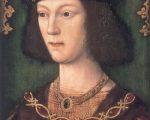
How much do you know about the young King Henry VIII? Find out with this fun quiz. Grab your favourite beverage and snack and let’s get started! Good luck!
[Read More...]
Just to let you know that this month’s live chats will be taking place on 9th and 23rd June. Both chats will last one hour and will take place in the Tudor Society chatroom at www.tudorsociety.com/chatroom/.
Our informal chat will take place on Saturday 9th June and this month’s topic is the Seymour family. This is your chance to share your views on the Seymours (Jane, Edward, Thomas, the Seymours in Elizabeth I’s reign, their background, anything Seymour related!), to pose questions about them, to ask the views of other members, to share book recommendations, and to just talk Tudor.
[Read More...]
In today’s Claire Chats video talk, I talk about the Rome and Rheims Plot, a fictional plot in which 20 men, mostly Catholic priests, were implicated. Many of them were tortured, tried and executed.
[Read More...]